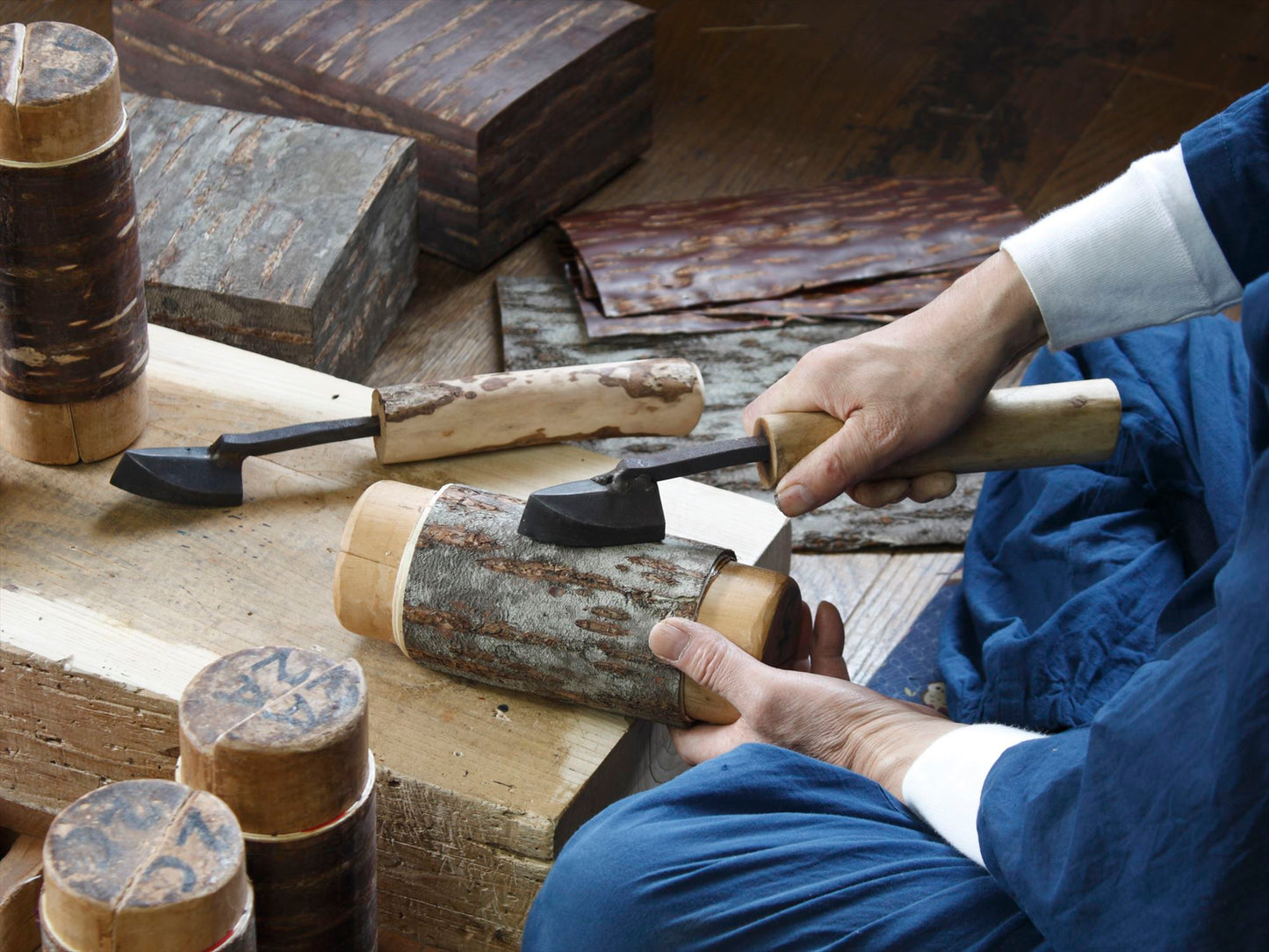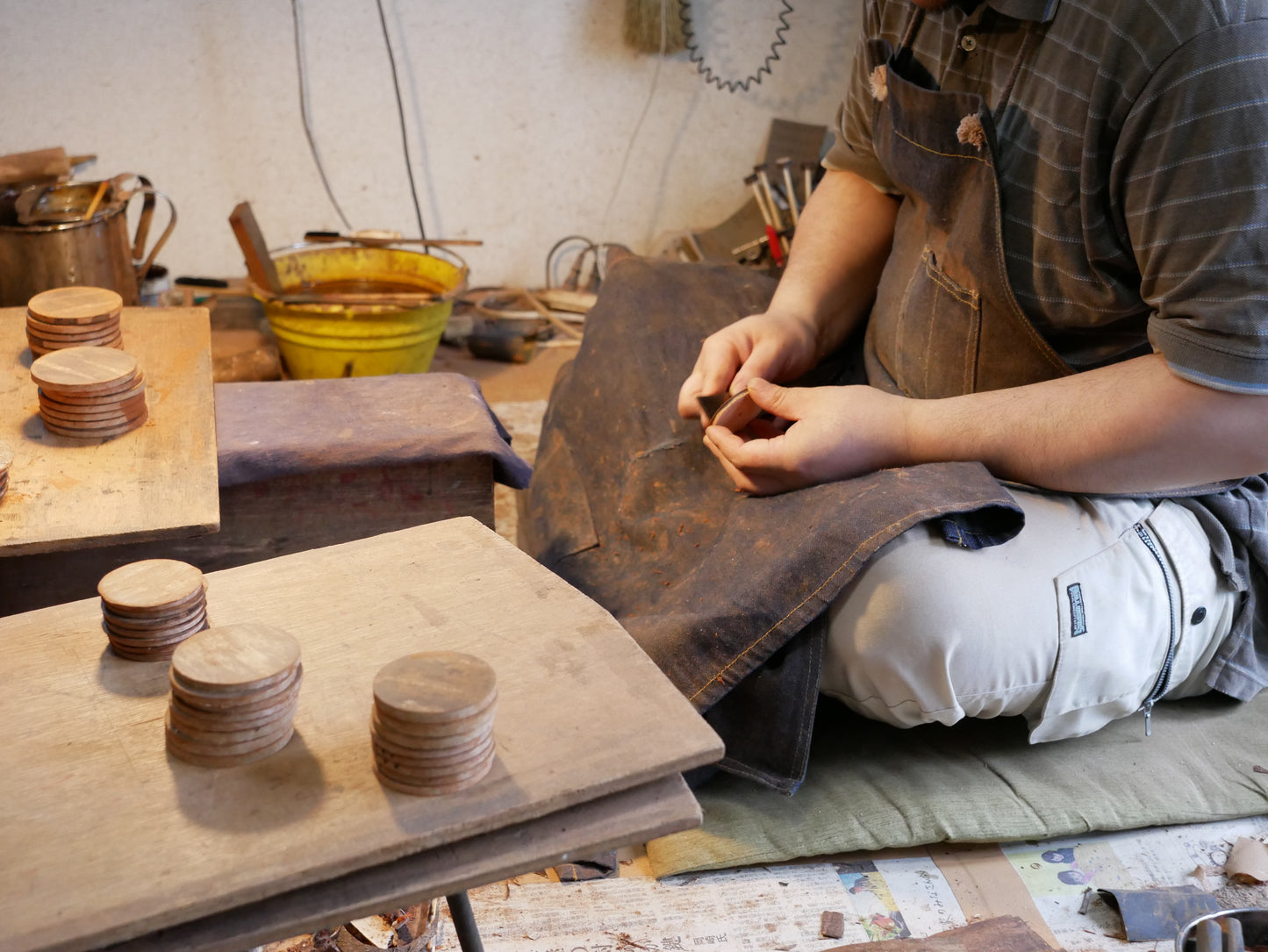
Traditional Japanese Kabazaiku
Cherry bark crafting, kabazaiku in Japanese, has been practiced in for well over 200 years in Kakunodate, Akita Prefecture, where its traditional techniques continue to be passed down. In fact, it was originally a side-hustle for low ranking samurai! As the Edo Period was marked by stability and peace, many samurai had to take on a secondary occupation to make ends meet. The high-quality craftsmanship of kabazaiku items were soon recognized, and it became an officially-recognized craft.

Keeps Tea Leaves in Outstanding Condition
Cherry bark is a natural insulator against changes in humidity, making it a perfectly suited for storing tea leaves and other sensitive products. Denshiro's tea caddy double lid design seals in all the freshness, keeping your tea and other items it top condition.

Sustainably Made with Natural Cherry Bark
Kakunodate is famous for its spectacular cherry trees. All Denshiro items are handmade with natural cherry bark, whose harvesting work itself requires extremely high skills. The bark is sustainably harvested by carefully alternating where bark is taken from, allowing for regrowth.

Fujiki Denshiro Shoten
Our first stop on the tour takes you to Fujiki Denshiro's kabazaiku shop and showroom. Kabazaiku is a local craft that uses cherry bark to make tea canisters, containers, home decor, and more. These crafts range from rustic, leaving the bark's natual texture, to refined with a high-gloss finish.
Developed during the Edo period as a side business for low-ranking samurai, kabazaiku has become the trademark craft of Kakunodate. We will visit Fujiki Denshiro Shoten, one of the main studios specializing in this craft for over 150 years, whose items are all handmade with natural cherry bark harvested traditionally by skilled artisans.

Samurai Residences
After lunch, you will visit Kakunodate's iconic attraction, the former samurai residences, called bukeyashiki in Japanese. Kakunodate was once a castle town, although the castle was demolished in 1620 in accordance with the shogunal decree at that time. The dignified residences in which the samurai lived however, remain, and are among the most well-preserved in all of Japan.
During your stroll around the samurai houses, you will notice that some of them have present-day residents, some of whom are even descended from the original samurai families. Each house has unique aesthetics and functions depending on the owner's profession and the position in the social hierarchy during feudal times, and several of them are converted into museums.

Kabazaiku Denshokan Museum
The tour culminates with a visit to Kabazaiku Denshokan Museum, where various kabazaiku demonstrations showcase the refined technical skills of the craftsmen. The museum also features exhibitions on local handicrafts, culture, and history. To finish your tour, visit the attached gift shop and tearoom to pick up some souvenirs or relax with a cup of tea.










